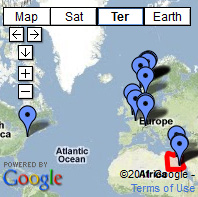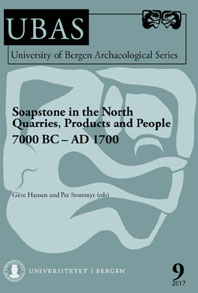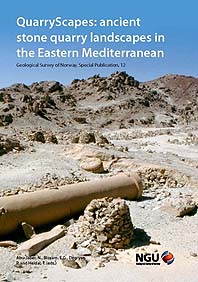
Late Palaeolithic rock art in Wadi Abu Subeira: A headless bovid, a hippo and, below (upright), perhaps a suckling calf? Photo by Per Storemyr
The number of discovered Late Palaeolithic rock art sites in Wadi Abu Subeira (Upper Egypt) is ever-increasing, now with finds also outside of the wadi, at el-Aqba el-Saghira. Archaeologist Adel Kelany of the Ministry of Antiquities in Aswan has just published an overview paper, now listing ten sites, most with several rock art panels. The largest site has a much as a hundred ones. As previously noted on this blog, this world-class rock art is under heavy pressure from modern mining, though efforts to protect the sites have shown some effect recently.

Adel Kelany (right) and Dirk Huyge discussing the rock art in Wadi Abu Subeira. They are slightly competing now: Who finds the most Palaeolithic rock art? Adel at Subeira and Saghira? Or Dirk at Qurta and el-Hosh? Photo by Per Storemyr
Although the finds in Wadi Abu Subeira itself is by far the more spectacular, the new Late Palaeolithic rock art in el-Aqba el-Saghira is arguably the most important find over the last couple of years. Saghira is a wadi some three kilometres to the north of Subeira, and it ties in not only with the Subeira rock art, but also with the well-known rock art of a similar age at Qurta and el-Hosh further downstream of the Nile. This rock art has been thoroughly investigated by the Belgian archaeological mission, headed by Dirk Huyge. Thus, we now have four Late Palaeolithic rock art locations in Upper Egypt, all from the hyper-arid period some 15-20.000 years ago. It is very likely that there will be more.

Newly discovered Late Palaeolithic panel at el-Aqba el-Saghira: A duck, perhaps a monkey (turn your head and you will see a long tail) and unidentified animals. Photo by Adel Kelany
At el-Aqba el-Saghira most of the late Palaeolithic rock art has probably been destroyed by modern mining, but there are panels left, on boulders having tumbled down the hillside.
Adel Kelany summarises the situation, stating that the “whole of this region turns out to be rich in rock art ascribed to the Upper Palaeolithic, which leads to a complete overhaul of our knowledge. It is extremely important to protect these exceptional testimonies.” Adel and his team of largely Egyptian archaeologists deserve all the support they can get in their hugely important work. For they are rewriting history.
The pressing question is, of course, what relationship there is between the Late Palaeolithic rock art in Upper Egypt and in Europe. It has a similar, naturalistic style, so different from later rock art.
Here’s the link to Adel’s recent paper
- Kelany, A. (2014): Late Palaeolithic Rock Art Sites at Wādi Abū Subeira and el-’Aqaba el-Saghira, Upper Egypt, Cahiers de l’AARS, 17, 105-115. View at academia.edu
Previous papers, and articles on the Subeira Late Palaeolithic rock art on this website
- A Palaeolithic, life-size Nubian ibex carved on rock: Adel Kelany with new discoveries in Wadi Abu Subeira, Upper Egypt
- The Palaeolithic rock art in Wadi Abu Subeira, Egypt: Landscape, archaeology, threats and conservation
- Wadi Abu Subeira, Egypt: Palaeolithic rock art on the verge of destruction
- The Late Palaeolithic rock art in Wadi Abu Subeira (Egypt)
- The Late Palaeolithic rock art at Qurta, Egypt: Field season 2011
- Storemyr, P., Kelany, A., Negm, M. A., Tohami, A. (2008). More “Lascaux along the Nile”? Possible Late Palaeolithic rock art in Wadi Abu Subeira, Upper Egypt. Sahara, 19, 155-158. View at academia.edu
Map







It’s now rather a matter of quality, Per! 🙂 Best, Dirk
It is!